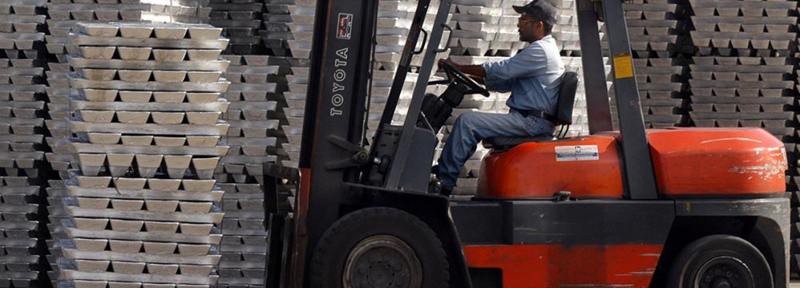
Bauxite and alumina represent the first two links in the value chain on the way to aluminum metal and eventually products. Bauxite is the most common raw material used to produce alumina for aluminum metal production. The white powder, alumina...

Iran’s bauxite reserves increased by 14 million tons in the last fiscal year (ended March 20, 2017), as a result of Iran Alumina Company’s explorations, the company’s manager, Touraj Zare’, said.
New reserves of bauxite with alumina and silicon dioxide content at about 35-47% and 4-27% respectively were discovered at a depth of 16,000 meters during exploration, Iranian Mines and Mining Industries Development and Renovation Organization reported.
Bauxite and alumina represent the first two links in the value chain on the way to aluminum metal and eventually products. Bauxite is the most common raw material used to produce alumina for aluminum metal production. The white powder, alumina, is produced by refining bauxite.
“Iran Alumina Company plans to continue explorations in the current year,” Zare’ said, adding that the operations will be undertaken in Yazd, North Khorasan, Semnan and Kohgilouyeh-Boyerahmad provinces.
As a subsidiary of IMIDRO, Iran Alumina Company produced 196,291 tons of bauxite, 103,983 tons of aluminum hydroxide, 35,995 tons of lime and 61,166 tons of alumina powder during the first quarter of the current year (March 21-June 21).
“Iran plans to produce 1.5 million tons of aluminum per year, as stipulated in the 20-Year Vision Plant (2005-25). To reach this ambitious target, more than $10 billion worth of investment are needed,” IMIDRO’s Chairman Mehdi Karbasian said.
Iran’s three major aluminum companies produced an aggregate of 293,988 tons of aluminum ingots last year to register a 1.38% decline, IMIDRO’s statistics indicate. Iran Aluminum Company produced 135,411 tons, Hormozal Aluminum Company 97,706 tons and Almahdi Alumium Company 60,970 tons.
On the other hand, imports for the same period stood at 406,235 tons worth $339 million, down 2% in terms of volume while growing 35% in terms of value.
The country’s aluminum output capacity and actual production has hovered around 350,000 tons per year for the past few years.
In theory, Iran has nearly all the essential factors needed to have a successful aluminum sector, such as access to cheap energy, skilled yet cheap labor force and a growing domestic market.
“What holds it back, however, is a lack of raw material reserves,” IMIDRO’s aluminum industry advisor, Mohammad Ashofteh Ajbisheh, said.
The country’s only developed source of bauxite is Jajarm Mine located in the city by the same name in North Khorasan Province with an estimated reserve of less than 20 million tons.
In addition to expanding explorations inside the country, Iran has a plan to exploit bauxite reserves abroad. It signed a contract with the government of Guinea-Conakry back in 1992 to exploit the 70 million tons of bauxite deposit located in the African country’s Dabola-Tougue mineral zone. Plans were stalled for decades, however, due to lack of transportation infrastructure and economic sanctions imposed on Iran.
The partnership with the Guinean government was renewed for another 25 years back in 2015. IMIDRO is currently involved in building a pipeline in Guinea to annually transport 4 million tons of bauxite to Conakry Port for shipment. The pipeline’s construction progress has not yet been disclosed by IMIDRO.